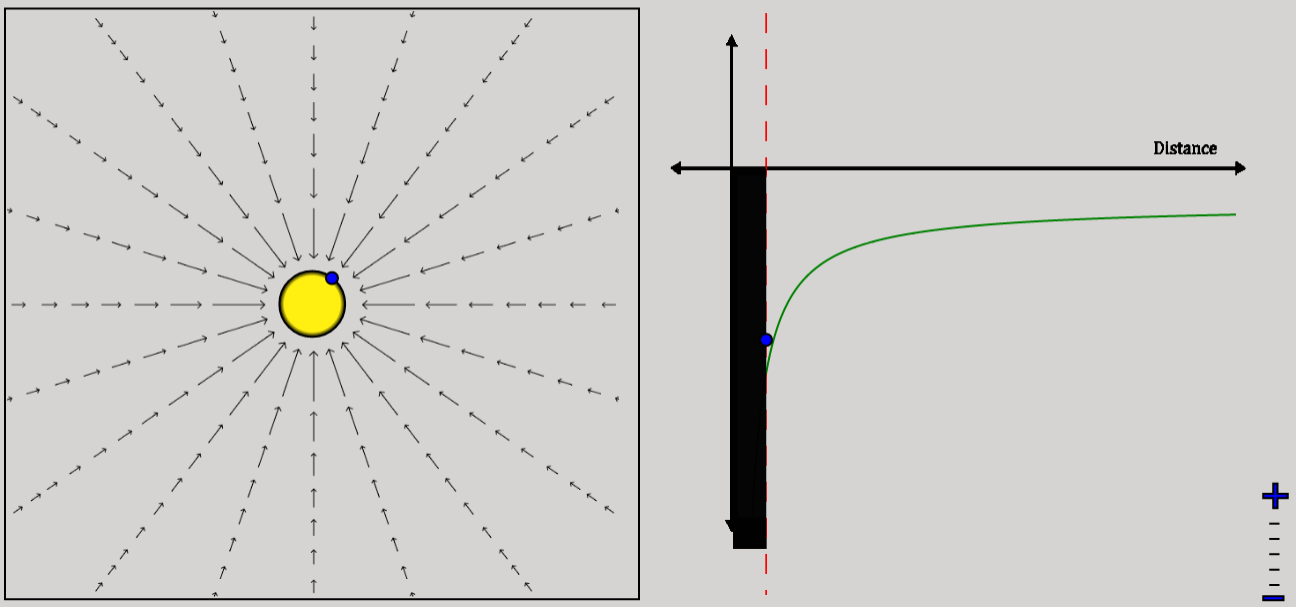
Click on the image to begin.
Everyone imagines the gravity of a compact object such as a neutron star or black hole to be really strong—and it is, near the compact object. But far away, its gravitational field is the same as that of any star of the same mass. This is clearly encoded in Newton's law of gravity, in which the only relevant variables are the gravitating object's mass and the test mass's distance from the center of the gravitating object. The only difference between the gravitational field of the Sun and that of a solar-mass compact object is that a test mass falling towards the Sun stops when it hits the Sun's surface (which is quite far from the Sun's center) whereas test masses can fall much further towards the center of a neutron star or other compact object, and thus probe higher-acceleration regions of space. This animation was created to replace the mental image students often have, in which the gravity a black hole is strong everywhere. Although our animation is of a solid compact object such as a neutron star rather than a black hole, the same principle applies.

This animation, created by Evan Angelico and Stella Sun, helps students visualize the situation. The arrows around the star illustrate the acceleration field, and these arrows do not change when you change the size of the star—when the star gets bigger, all that happens is that more of the inner arrows are covered up. Students often forget the distinction between size and mass, so the color of the star is diluted as the star is made bigger, suggesting that the same amount of stuff is spread over a larger volume. The panel on the right shows the gravitational potential. Even if the level of the class is such that the instructor has not explained exactly what the potential is, students recognize the funnel shape. The key point is that the inner part of the funnel is inaccessible for normal-size stars. When they become compact objects, the region of interestingly high acceleration becomes accessible. To really see the acceleration, students can release a test mass from any point.